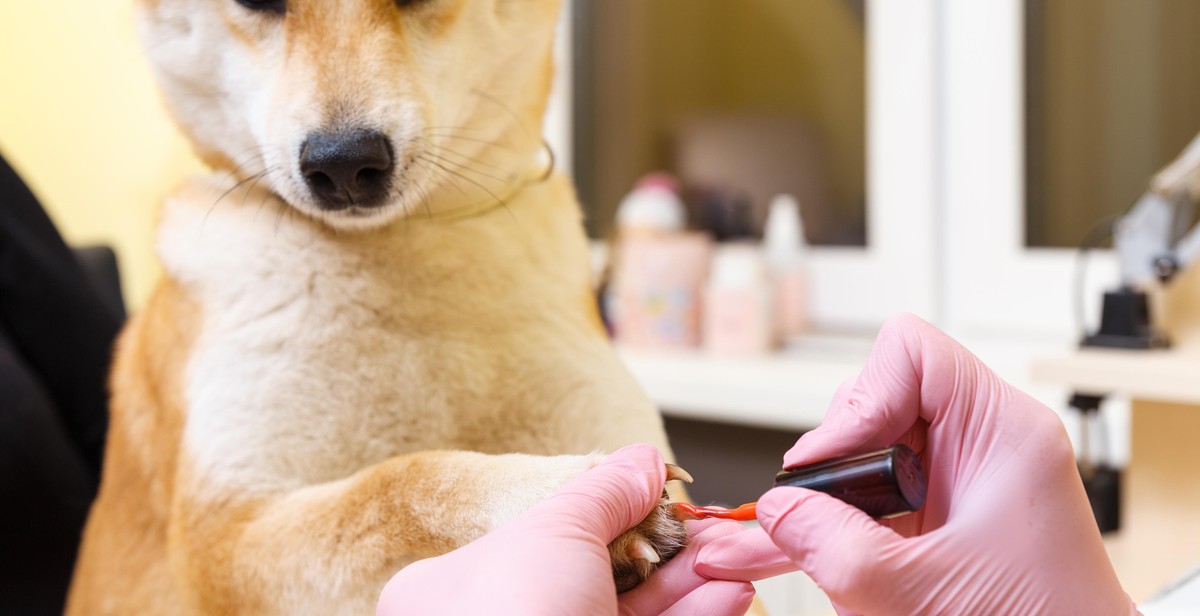How to Treat and Prevent Ingrown Toenails
Ingrown toenails are a common and often painful condition that occurs when the corner or edge of a toenail grows into the skin surrounding it. This can cause redness, swelling, and even infection in some cases. Ingrown toenails can affect anyone, but they are more common in people with thick or curved nails, those who wear tight-fitting shoes, and those who do not properly trim their toenails.
Symptoms of Ingrown Toenails
The most common symptoms of ingrown toenails include:
- Pain and tenderness along the side of the toenail
- Redness and swelling around the toenail
- Infection, which can cause drainage and a foul odor
Treatment for Ingrown Toenails
Treatment for ingrown toenails typically involves soaking the affected foot in warm water, gently lifting the nail away from the skin, and placing a small piece of cotton or dental floss under the nail to encourage it to grow above the skin. In more severe cases, a doctor may need to remove a portion of the nail or prescribe antibiotics to treat an infection.
Prevention of Ingrown Toenails
Preventing ingrown toenails involves proper toenail care, such as trimming nails straight across and avoiding tight-fitting shoes. It is also important to keep feet clean and dry and to wear protective footwear in situations where the toes may be at risk of injury.

Causes of Ingrown Toenails
Ingrown toenails are a common foot problem that occurs when the edge of the nail grows into the skin surrounding the nail. This can cause pain, swelling, and redness in the affected area. There are several causes of ingrown toenails, including:
Improper Footwear
Wearing shoes that are too tight or narrow can put pressure on the toes and cause the nail to grow into the skin. High heels and shoes with a pointed toe box are common culprits of ingrown toenails. It’s important to wear shoes that fit properly and provide enough room for your toes to move freely.
Improper Nail Trimming
Cutting your toenails too short or rounding the edges can cause the nail to grow into the skin. It’s important to trim your toenails straight across and avoid cutting them too short. Using sharp nail clippers and avoiding picking at the corners of the nails can also help prevent ingrown toenails.
Injury or Trauma to the Toe
An injury or trauma to the toe, such as stubbing your toe or dropping something heavy on it, can cause the nail to grow into the skin. This is because the trauma can cause the nail to grow abnormally or damage the skin surrounding the nail. It’s important to take care of your feet and avoid injuring them whenever possible.
Overall, ingrown toenails can be caused by a variety of factors. By taking care of your feet and wearing proper footwear, you can help prevent ingrown toenails from occurring.

Symptoms of Ingrown Toenails
Ingrown toenails can cause a lot of discomfort and pain, and if left untreated, they can lead to serious infections. The following are the most common symptoms that indicate you may be suffering from an ingrown toenail:
Pain and Tenderness
One of the most common symptoms of an ingrown toenail is pain and tenderness around the affected area. The pain can range from mild discomfort to severe throbbing pain. The affected toe may also be sensitive to touch, making it difficult to wear shoes or walk comfortably.
Redness and Swelling
Ingrown toenails can also cause redness and swelling around the affected area. The skin around the nail may appear inflamed and tender to the touch. In some cases, the swelling may be so severe that it makes it difficult to wear shoes or walk without discomfort.
Infection
If left untreated, an ingrown toenail can lead to an infection. Signs of an infected ingrown toenail include increased pain, swelling, redness, and warmth around the affected area. You may also notice pus or drainage coming from the site of the infection. If you experience any of these symptoms, it is important to seek medical attention immediately to prevent the infection from spreading.

Treatment Options for Ingrown Toenails
Ingrown toenails can be painful and uncomfortable. Fortunately, there are several treatment options available to alleviate the symptoms and prevent further complications.
Soaking the Toe
Soaking the affected toe in warm water for 15-20 minutes, 3-4 times a day can help to reduce pain and swelling. Adding Epsom salt or apple cider vinegar to the water can also help to fight infection.
Lifting the Nail
If the ingrown toenail is not too severe, lifting the nail and placing a small piece of cotton or dental floss underneath it can help to relieve pressure and encourage the nail to grow in the right direction.
Partial Nail Removal
If the ingrown toenail is causing significant pain and discomfort, a doctor may recommend a partial nail removal. This involves removing the part of the nail that is digging into the skin and causing the problem. The procedure is done under local anesthesia and is relatively quick and painless.
Complete Nail Removal
In severe cases where the ingrown toenail keeps coming back, a doctor may recommend complete nail removal. This involves removing the entire nail and the nail bed underneath it. It is a more invasive procedure and may require a longer recovery time.
| Treatment Option | Pros | Cons |
|---|---|---|
| Soaking the Toe | Easy to do at home, helps to reduce pain and swelling | May not be effective for severe cases |
| Lifting the Nail | Non-invasive, can be done at home | May not be effective for severe cases |
| Partial Nail Removal | Relatively quick and painless, can provide immediate relief | May require a longer recovery time than other options |
| Complete Nail Removal | Can provide a permanent solution for severe cases | More invasive procedure, longer recovery time |
It is important to seek medical attention if you have an ingrown toenail that is causing significant pain or if you have diabetes or other medical conditions that may affect your feet. Your doctor can help you decide which treatment option is best for you.

Prevention of Ingrown Toenails
Ingrown toenails can be a painful and uncomfortable condition. However, it is possible to prevent them from occurring by following some simple steps.
Proper Footwear
Wearing shoes that fit properly is essential in preventing ingrown toenails. Shoes that are too tight can put pressure on the toes and cause the nails to grow into the skin. On the other hand, shoes that are too loose can cause the toes to slide forward and also increase the risk of ingrown toenails. It is recommended to wear shoes that provide enough room for the toes to move around and breathe.
Proper Nail Trimming
Trimming your toenails properly can also help prevent ingrown toenails. It is recommended to trim your nails straight across and avoid rounding the corners. Additionally, it is important not to cut your nails too short, as this can cause the skin to grow over the nail and lead to ingrown toenails.
Avoiding Injury or Trauma to the Toe
Injury or trauma to the toe can also increase the risk of ingrown toenails. It is important to wear protective footwear when engaging in activities that may cause injury to the toes, such as sports. Additionally, it is important to avoid stubbing or jamming your toes, as this can cause the nails to grow into the skin.
| Do’s | Don’ts |
|---|---|
|
|

When to See a Doctor
Ingrown toenails can be painful and uncomfortable, but in most cases, they can be treated and prevented at home. However, there are times when a doctor’s intervention is necessary. Here are some signs that you should see a doctor for your ingrown toenail:
Signs of Infection
If you notice any signs of infection, such as redness, swelling, warmth, or drainage, you should see a doctor immediately. These symptoms can indicate that the ingrown toenail has become infected, which can lead to serious complications if left untreated.
Chronic or Recurrent Ingrown Toenails
If you are experiencing chronic or recurrent ingrown toenails, despite your best efforts to prevent them, it may be time to see a doctor. Your doctor can help determine the underlying cause of your ingrown toenails and develop a treatment plan to prevent them from recurring.
Underlying Medical Conditions
Ingrown toenails can sometimes be a symptom of an underlying medical condition, such as diabetes or a fungal infection. If you have an underlying medical condition, it’s important to see a doctor for any foot-related issues, including ingrown toenails, as they can be more serious and require specialized treatment.
If you are experiencing any of these symptoms or situations, it’s important to see a doctor as soon as possible. They can provide you with the necessary treatment to alleviate your symptoms and prevent further complications.

Conclusion
Ingrown toenails can be painful and uncomfortable, but they are a common condition that can be treated and prevented. By following the tips and techniques outlined in this article, you can reduce your risk of developing ingrown toenails and alleviate any discomfort you may be experiencing.
Treating Ingrown Toenails
If you are experiencing an ingrown toenail, there are several steps you can take to treat the condition:
- Soak your foot in warm water
- Gently massage the affected area
- Wear comfortable shoes
- Take pain relievers as needed
- See a doctor if the condition does not improve
Preventing Ingrown Toenails
There are also several steps you can take to prevent ingrown toenails from developing in the first place:
- Trim your toenails straight across
- Avoid cutting your toenails too short
- Wear shoes that fit properly
- Avoid wearing tight or narrow shoes
- Maintain good foot hygiene
When to See a Doctor
If you are experiencing severe pain, swelling, or infection, it is important to see a doctor. Your doctor can provide treatment for your ingrown toenail and help you prevent the condition from recurring.
| Treatment | Prevention | Doctor |
|---|---|---|
| Soak in warm water | Trim toenails straight | Severe pain or infection |
| Massage affected area | Avoid cutting nails too short | Swelling or redness |
| Wear comfortable shoes | Wear properly fitting shoes | Recurring ingrown toenails |
By taking care of your feet and following these tips, you can prevent and treat ingrown toenails and keep your feet healthy and pain-free.
